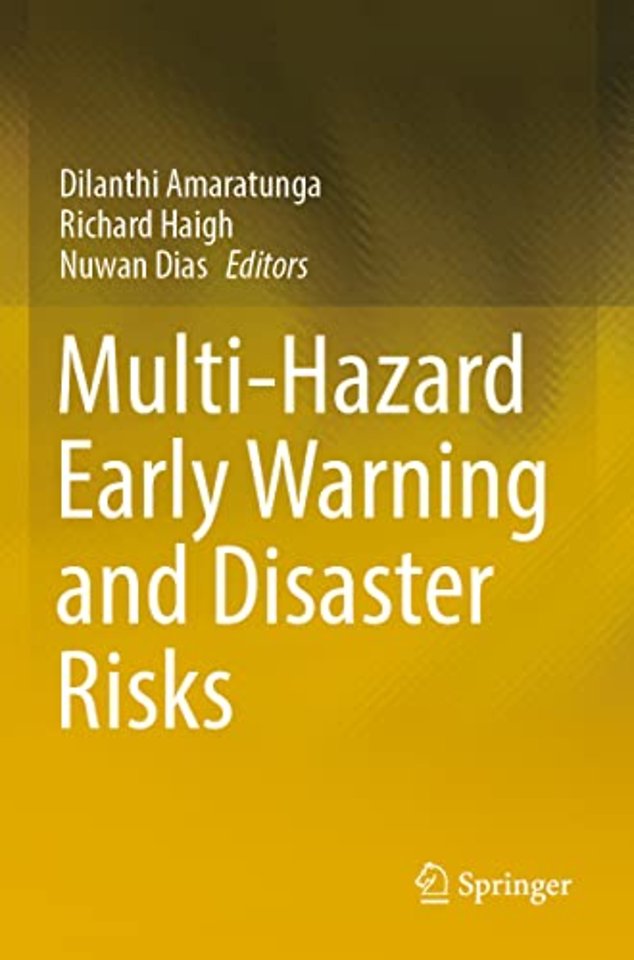Multi-Hazard Early Warning and Disaster Risks
Samenvatting
This book presents a collection of papers under the theme of multi-hazard early warning and disaster risks. These were selected from the presentations made at the International Symposium on Tsunami and Multi-Hazard Risks, Early Warning and Community Awareness in supporting implementation of the Sendai Framework for Disaster Risk Reduction 2015-2030. This conference aimed to recognize achievements and to highlight work that still needs to be carried out. The conference promoted collaboration among academia, research institutions and disaster management offices, and further encouraged multidisciplinary and multi-sectoral interaction
This International Symposium on Multi-Hazard Early Warning and Disaster Risk Reduction provided an important opportunity to reflect upon our progress to date in tackling disaster risk, but also to consider some of the challenges and opportunities that lay ahead of us.
A particular focus of this event wasMulti-Hazard Early Warning. During the negotiations for the Sendai Framework, countries and partners highlighted the need to:
1. Continue to invest in, develop, maintain and strengthen people-centred, end-to-end early warning systems;
2. Promote the application of simple and low cost early warning equipment and facilities;
3. Broaden the dissemination channels for early warning information to facilitate early action.
Countries also called for the further development of and investment in effective, nationally compatible, regional multi-hazard early warning mechanisms. To address these needs, global Target (g) of the Sendai Framework was adopted, namely to “substantially increase the availability of and access to multi-hazard early warning systems and disaster risk information and assessments to the people by 2030”.
As illustrated by recent events in Indonesia, it is also vital to address the challenge of cascading hazards that pose a tsunami risk, and the importance of linking tsunami early warning to a multi-hazard environment. However, moving towards a multi-hazard environment is complex and poses many challenges but can bring significant benefits in terms of efficiencies and also in recognising the links between hazards, such as cascading threats. We very much hope that this book will provide an important platform to address these and other challenges in addressing disaster risk, as well as supporting implementation of the Sendai Framework for Disaster Risk Reduction
Specificaties
Inhoudsopgave
<p>Foreword: Dilanthi Amaratunga, Richard Haigh, University of Huddersfield, UK</p>
<p>1. Early warning in a changing climate</p>
<p>2. Risk based/informed early warning and global agendas - Sendai and SDGs</p>
<p>3. The first mile - Hazard monitoring; forecasting and warnings; new, innovative tools / products for strengthening EWSs</p>
<p>4. Early warning interface - legal and institutional framework, clearly defined actors, governance and institutional arrangements, vertical and horizontal coordination</p>
<p>5. Reaching the last mile - Bringing the message to communities at risk - Technical, legal and socio-cultural complexities involved in communicating coastal based hazard early warning to communities</p>
<p>6. Next generation of TEW dissemination</p>
<p>7. Using GIS technology for disaster preparedness and early warning</p>
<p>8. Formal and informal communication mechanisms in early warning</p>
<p>9. Risk transferring and forecast based financing for DRR</p>
<p>10. Institutionalising and sustaining early warning systems -Technical, human and operational capacity, and localisation</p>
<p>11. Local ownership, enhancing response capacity and community awareness</p>
<p>12. Measuring early warning effectiveness and ongoing evaluation</p>
<p>13. Simulation exercises, drills and Standard Operating Procedures (SOPs)</p>
<p>14. Multi-Hazard Early Warning (MHEW) Systems, including exploring the potential for synergising tsunami early warning with other hazards</p>
<p>15. Nature Based Solutions (NBSs) for managing disaster</p>
<p>Conclusions and future conferences</p>

